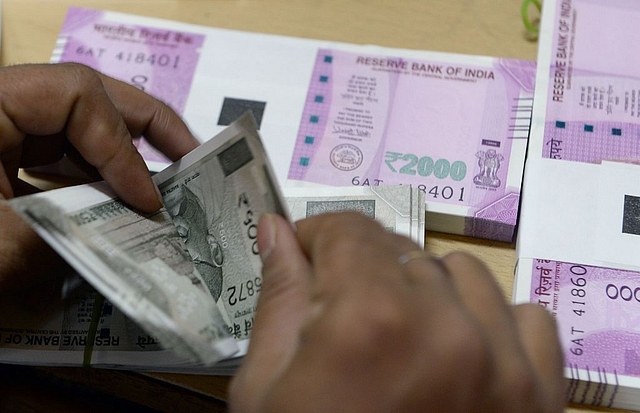
DeMo Impact On GDP: The Cassandras Got It More Wrong Than The Optimists
Cassandras were partially right for the wrong reasons, and for that they get one cheer and two boos.
However, they may have one more chance to crow – if the first quarter GDP for the current financial year shows another dip.
The Cassandras appear to be right after all. The Central Statistics Office’s provisional estimates for 2016-17 – a year marked by the shock demonetisation (DeMo) of high-value notes in November 2016 – show that gross domestic product (GDP) growth dropped from 8 per cent in 2015-16 to 7.1 per cent last year, while GVA (gross value added) growth plummeted from 7.9 per cent to 6.6 per cent, a drop of 1.3 percentage points.
Quarter-to-quarter comparisons are even starker, with the fourth quarter of 2016-17 showing a precipitate drop of 3.1 per cent in terms of GVA to 5.6 per cent from the corresponding quarter of 2015-17, when GVA growth was a spiffy 8.7 per cent – the highest in the Narendra Modi years. This effectively seems to validate all the naysayers, from Manmohan Singh’s estimate of more than 2 per cent drop in growth, to Ambit Capital’s more pessimistic prediction of a 3.3 per cent in 2016-17.
However, even the Cassandras are wrong, for they predicted a spectacular GDP drop (and not a GVA drop). GDP is GVA adjusted for taxes and subsidies. The actual GDP figures for 2016-17 show a 0.9 per cent drop over the year before, and even GVA has dropped from 7.9 per cent in 2015-16 to 6.6 per cent last year – a fall of 1.3 per cent.
The pessimists are as wide off the mark as the optimists, who foresaw a 0.5-1 per cent drop. In fact, the optimists got closer to the mark than the pessimists. Ambit’s GDP number for 2016-17, made post-DeMo in November last year, was 3.5 per cent (half the final number of 7.1 per cent). They didn’t hit the broad side of the barn. Manmohan Singh got closer, but he was wrong by 1.1 per cent at least – a huge margin of error.
The others did much better. The predictions made post-November were the following: Crisil said GDP would be hit by 1 per cent (nearly right), Moody’s said GDP would be 7.1 per cent (bang on for the final number), Care said GDP would drop by 0.3-0.5 per cent (which was too optimistic), and the IMF said GDP would fall to 6.6 per cent, missing the mark by 0.5 per cent on the side of excess pessimism. But this is a reasonable miss, and a far cry from the political naysayers who wanted GDP to fall.
We also need to separate the full year’s GDP drop from that of the fourth quarter, when the impact of DeMo was maximum. Moreover, the third quarter was benefited by the festive season lift in October and early November, and orders already placed before had to be executed during November. The real negative impact started from December, and continued till at least end-February. Which is why you are seeing a concentrated impact in the fourth quarter.
But GDP dropped to 6.1 per cent in the fourth quarter, a far cry from the 2 per cent drop predicted by the former prime minister, even assuming he was talking about just the worst quarter (he wasn’t). GDP fell from 7 per cent in the third quarter to 6.1 per cent, and GVA from 6.7 per cent to 5.6 per cent. The only figure that bears out the excess pessimism is a comparison of the fourth quarter GVAs of 2015-16 and 2016-17 – the drop was steep from 8.7 per cent to 5.6 per cent.
But when the Cassandras had made their predictions, they were not talking about GVA or the fourth quarter.
They were partially right for the wrong reasons, and for that they get one cheer and two boos. However, they may have one more chance to crow – if the first quarter GDP for the current financial year shows another dip. After that we get into the uncertainties of GST implementation, and all comparisons will be meaningless.